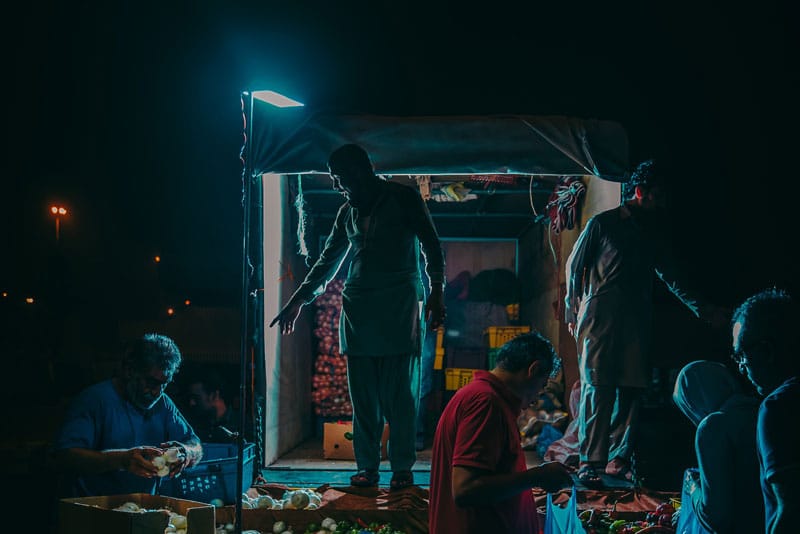Human trafficking.
The very phrase seems incomprehensible, and yet the sale of souls in our world today is a reality that is as widespread as it is horrifying.
Have you seen news stories about human trafficking, but wondered what it means? Have you learned a bit from a movie or poster, but when someone asks you to explain human trafficking in detail, you’re at a loss?
For the next few weeks, the Alliance for Freedom, Restoration, and Justice (AFRJ) will take a deep-dive into this complex issue while providing you with resources to further your understanding of human trafficking.
Join AFRJ as we unearth important details and common misconceptions about human trafficking: where it occurs, who it affects, who are its most-likely victims and more. Part one of this series will define human trafficking in its different forms.
A quick note before we begin: human trafficking is also commonly referred to as “trafficking in persons” and “modern-day slavery.” Some sources will use these terms interchangeably, in this post we will consistently use the term “human trafficking.”
There Are More Slaves In the World Today Than Ever Before
Human trafficking is a form of modern slavery for purposes of sexual exploitation, forced labor or services, or organ trafficking.
It’s a $150 billion-a-year industry, making it one of the fastest-growing crimes worldwide. It’s a global issue that knows no demographic or geographical boundary.
But despite a major increase in media coverage and legislation in the last five years, there still seems to be a great misunderstanding about what crimes actually qualify as human trafficking. The term has had a shifting definition over the years, and it’s one that’s interpreted (and misinterpreted) in numerous ways.
To unveil the deeper questions about human trafficking, we must first explore the basics.
How Do You Define Human Trafficking? Start By Asking the Experts.
- According to the United Nations, human trafficking is: “The recruitment, transportation, transfer, harboring or receipt of persons, by means of the threat or use of force or other forms of coercion, of abduction, of fraud, of deception, of the abuse of power or of a position of vulnerability or of the giving or receiving of payments or benefits to achieve the consent of a person having control over another person, for the purpose of exploitation. Exploitation shall include, at a minimum, the exploitation of the prostitution of others or other forms of sexual exploitation, forced labor or services, slavery or practices similar to slavery, servitude or the removal of organs.”
- The United States Trafficking Victims Protection Act (TVPA) includes special protections for minors, and defines human trafficking as:
- “The recruitment, harboring, transportation, provision, or obtaining of a person for the purpose of a commercial sex act [any sex act on account of which anything of value is given or received by any person], in which the commercial sex act is induced by force, fraud, or coercion, or in which the person induced to perform such act has not attained 18 years of age.”
- The TVPA further defines labor trafficking as “the recruitment, harboring, transportation, provision, or obtaining of a person for labor or services, through the use of force, fraud, or coercion for the purpose of subjection to involuntary servitude, peonage, debt bondage, or slavery.”
Having definitions that are consistent across agencies and communities is important because whenever there are competing definitions of human trafficking, victims may be misidentified or not offered the appropriate services. Despite its many definitions, identifiers, and types of cases with specific attributes, it’s important to understand that human trafficking is the term that describes all crimes of this nature. We’ll define the most prevalent forms of human trafficking below – but even still, this list isn’t exhaustive:
What Is Labor Trafficking?
Labor trafficking is defined as using violence, threats, lies, debt bondage and other forms of coercion to force its victims to work against their will.
Victims of labor trafficking produce numerous consumer goods and food products as well as services in a number of different industries. In fact, the U.S. Department of Labor has identified 136 goods from 74 countries made by forced and child labor.
Common examples of labor trafficking include:
- Situations of domestic servitude, where a person is forced to work in a home without proper compensation, or without the freedom to leave at their will for fear of ramifications.
- Factories producing goods like clothing, jewelry, bricks, rugs, textiles, etc. using child labor or putting workers at great risk, including long work hours, insufficient pay, physical abuse, and more.
- Mines using children for labor or forcing workers to endure harsh conditions without proper compensation or protections.
- Agricultural workers – oftentimes this looks like migrant workers that are recruited under false promises of pay, with exorbitant recruitment, legal, and transportation fees that leave an individual with crippling debt. These workers are also vulnerable to false information regarding their legal immigration status, or situations where an employer uses their illegal status as a threat.
- Restaurants and the food service industry can bring workers into a trafficking situation by forcing workers to stay on premises or refuse medical treatment for a work-related injury. They may misrepresent the work, conditions, and wages offered, withhold or confiscate wages, or threaten workers if they choose to leave or report their situation to authorities.
- Traveling sales crews move from city to city and between states going door-to-door, often selling fraudulent products like magazine subscriptions. Crew members are viewed as independent contractors, shielding companies from regulation and liability. Teens and young adults are targeted, and managers control all aspects of their lives on the road with these crews.
- The fishing and shrimping industry is rife with examples of children forced to work in harsh conditions for many hours each day separated from their families. Other instances include shrimp peeling and fishing boats with various exploitative, abusive, and violent conditions for workers.
Learn more about labor trafficking:
The US Office of Administration of Children & Families (ACF)
What is Sex Trafficking?
Sex trafficking occurs when an assailant uses force, fraud or coercion to make an individual 18 years or older engage in commercial sex acts (prostitution, pornography, or sexual performance for which anything of value is given or received). Under U.S. law, a minor induced into commercial sex is a victim of trafficking – regardless of whether there was force, fraud, or coercion.
Common examples of sex trafficking include:
- Escort Services
- Outdoor solicitation
- Pornography
- Illicit massage
- Bars, strip clubs, cantinas
- Brothels
- Personal sexual servitude
- And remote interactive sexual acts
Learn more about sex trafficking:
National Human Trafficking Hotline
How are victims of sex trafficking recruited?
Recruitment happens in a number of ways, including but not limited to:
- Promises of job opportunities like modeling or acting, or completely unrelated jobs
- Romantic relationships (often referred to as “Romeo pimps” or “lover boys”)
- An offer of shelter, financial support or other benefits
- Family members who sell an individual for economic reasons such as for rent or to support a drug habit
For each type of recruitment, there are a variety of situations that make a person vulnerable. This could be anything from poverty to being in foster care or being a previous victim of abuse. We’ll cover vulnerabilities at greater length in a future blog post in this series.
It’s not always a black and white issue.
There are many other forms of trafficking that don’t fall distinctly under labor or sex trafficking. We certainly have not listed all possible forms of human trafficking here, but hopefully, this list will show the many ways that people are exploited in a manner that can be classified as human trafficking.
- Because of a worldwide scarcity of available donations for transplants, organ trafficking is a means for desperate people to find alternate organs. This increased demand has created a black market and various methods of acquiring organs to sell.
- Child soldiers are serving in armed conflicts around the world. These children are abducted or recruited by force, while others join out of desperation and survival. This typically happens in areas of major armed conflict as families are separated and societal structure is deteriorating.
- Peddling or begging is sometimes part of a larger picture where a person is trying to pay off a debt or is forced to beg or sell wares by the threat of violence or other abuse.
Education is activism, so continue learning.
Learning about the issue is the best way to get started in exploring how you can engage to end human trafficking. The more you know, the more you can educate those around you and begin to understand how your skills and interests are needed to join this fight. We hope you’ll discover what skills and interests you have that can be used in this effort in your own community.
Stay tuned for part two of the Human Trafficking 101 series: Where does human trafficking exist?
Resources for Further Learning
- For a clear picture of what human trafficking can look like in the United States, take a look at the 25 types of trafficking identified by the Polaris Project.
- Learn how the items you purchase might support human trafficking.
- Read more about child labor.
What do you want to know?
Let us know in the comments what questions you have about human trafficking.
If you suspect a trafficking situation call the National Human Trafficking Hotline now: 1-888-373-7888

